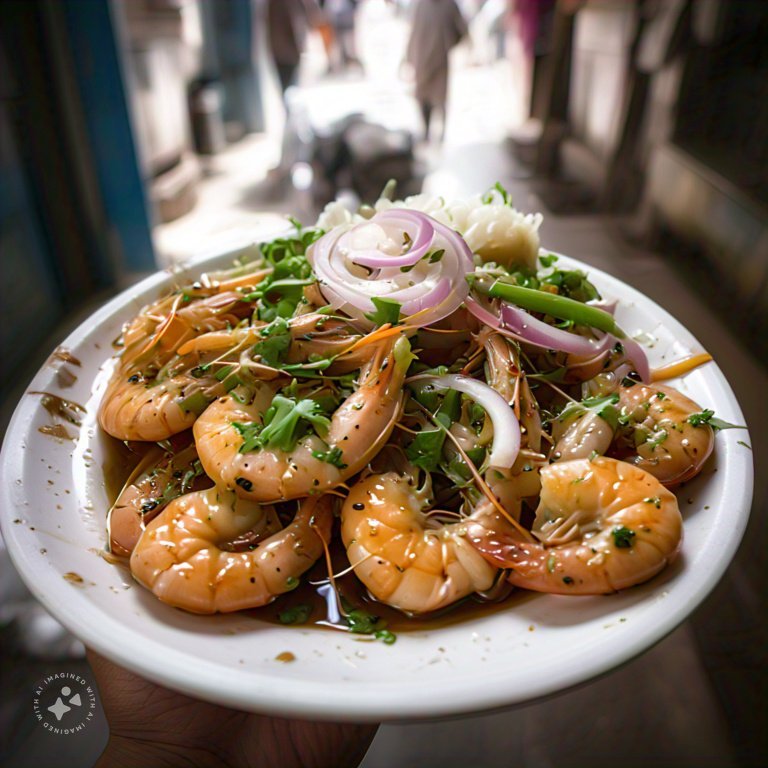10 Jaw-Dropping Prawns in India You Need to Try Now

Introduction to Prawns in india: A Delicacy in Indian Cuisine
Prawns in india hold a cherished position in Indian cuisine, appreciated for their succulent texture and versatile flavor. These crustaceans are found in an array of species across Indian waters, both freshwater and marine, contributing to a vibrant seafood culture. The diversity of prawn species in India includes well-known varieties such as the Giant Tiger Prawn (Penaeus monodon) and the Indian White Prawn (Fenneropenaeus indicus), each bringing unique culinary possibilities to the table.
The significance of prawns in Indian cuisine extends beyond their taste. Nutritionally, prawns are a powerhouse, offering a rich source of high-quality protein, omega-3 fatty acids, and essential vitamins and minerals such as vitamin B12, iron, and zinc. These nutritional benefits have cemented prawns as a key component of balanced diets, making them particularly esteemed in health-conscious food practices.
In traditional Indian diets, prawns often feature in a myriad of regional specialties, enhancing dishes with their distinctive sweetness and firm texture. From the coastal Malabar regions where prawns are integrated into spicy curries and coconut milk gravies, to the Bengali kitchens where ‘chingri malai curry’ showcases prawns’ elegance, these crustaceans are celebrated across culinary traditions.
Moreover, prawns’ popularity in India is also a reflection of cultural practices and regional abundance. Coastal states such as Kerala, Goa, and West Bengal, where fresh prawns are readily available, have developed intricate recipes that highlight the delicacy of prawns. The integration of prawns in india into local festivities and feasts illustrates their importance not just as food, but as a cultural symbol.
By understanding the types and roles of prawns in India cuisine, we gain insight into their esteemed status. Prawns in india are not just a culinary delight but also embody the nutritional and cultural heritage of Indian dietary practices, making them an indispensable part of the nation’s gastronomic identity.
Regional Varieties and Cooking Methods
Prawns, a celebrated delicacy in India, are prepared in myriad ways across the vast and diverse regions of the country. Each state boasts its own unique prawn preparations, reflecting the local palate, ingredients, and cooking techniques. Among the coastal regions, renowned for their seafood dishes, Kerala’s Malabar Prawn Curry stands out with its rich and aromatic coconut-based gravy. Prepared with freshly ground spices, curry leaves, and coconut milk, this dish marries the natural sweetness of prawns with the creamy, slightly tangy flavors of the curry base.
In Goa, Prawn Balchão is a fiery delicacy that exemplifies the region’s Portuguese influence. This dish involves prawns cooked in a spicy and tangy pickle-like masala, combining vinegar with dried red chillies, garlic, and other spices. The result is a vibrant, robust dish that pairs perfectly with steamed rice or traditional Goan bread.
Tamil Nadu offers a different take with its Prawn Masala, characterized by the bold use of tamarind, tomatoes, and a blend of spices such as mustard seeds, curry leaves, and red chillies. This tangy and spicy dish vividly represents Tamil Nadu’s affinity for pronounced flavors and hearty preparations.
The Western coast, particularly Maharashtra, favors prawn dishes infused with a generous helping of freshly grated coconut and kokum, a souring agent unique to the region. Meanwhile, in the Eastern states like West Bengal, prawns are often cooked with mustard paste, green chillies, and mustard oil, best exemplified in the cherished Chingri Malai Curry that balances heat and creaminess.
Across India, the preparation methods for prawns vary considerably but always emphasize local ingredients and spices, creating an impressive tapestry of regional flavors. Whether through the coconut-rich gravies of the South, the tangy and spicy curries of the West and East, or the bold, complex masalas of other regions, prawns in India are a testament to the country’s rich culinary heritage and regional diversity.

Prawn in india Farming and Sustainability in India
Prawn farming has a rich history in India, dating back several decades. This sector has evolved significantly, underpinned by advancements in aquaculture techniques and a growing global appetite for prawns. Today, India stands as one of the foremost producers of farmed prawns, with major prawn farming areas located in the states of Andhra Pradesh and West Bengal. These regions are renowned for their conducive climatic conditions and ample water resources, facilitating the cultivation of various prawn species.
The most commonly farmed prawns in India include Tiger Prawns (Penaeus monodon) and Whiteleg Shrimp (Litopenaeus vannamei). Tiger Prawns are cherished for their large size and rich flavor, while Whiteleg Shrimp is prized for its rapid growth rate and resilience to disease. The adoption of intensive farming methods and innovative aquaculture practices has bolstered India’s output, positioning the country as a pivotal player in the global seafood market.
However, the expansion of prawn farming is not without its environmental challenges. Intensive aquaculture practices can lead to issues such as water pollution, habitat destruction, and the overuse of antibiotics. To counter these negative impacts, the Indian prawn farming industry is increasingly focusing on sustainable practices. Measures being implemented include the development of eco-friendly feed, stricter regulations on antibiotic usage, and the integration of biosecurity measures to prevent disease outbreaks.
Moreover, the adoption of certification programs such as the Aquaculture Stewardship Council (ASC) and Best Aquaculture Practices (BAP) is gaining traction among Indian prawn farmers. These certifications ensure that farms adhere to stringent environmental and social standards, promoting sustainable and responsible farming practices. Despite these efforts, challenges remain, such as balancing economic growth with environmental sustainability and ensuring the livelihoods of local communities reliant on prawn farming.
Prawn farming holds significant economic importance for India, providing employment opportunities to thousands of people, particularly in rural coastal areas. It also supports ancillary industries such as feed production, processing units, and logistics, thereby contributing to the overall economy. By embracing sustainable practices, the Indian prawn farming industry aims to ensure the long-term viability of this vital sector, safeguarding both the environment and the well-being of its communities.
Health Benefits and Nutritional Value of Prawns
Prawns are not only a culinary delight but also a powerhouse of essential nutrients, making them a valuable addition to a balanced diet. Rich in high-quality protein, prawns provide the body with the necessary building blocks for muscle repair and growth. A 100-gram serving of prawns can deliver around 20 grams of protein, which is comparable to other protein sources like chicken or fish.
Prawns are particularly noted for their vitamin and mineral content. They are an excellent source of vitamins D and B12, both crucial for maintaining healthy bones and nerve function. Additionally, prawns are packed with essential minerals like iodine, zinc, and selenium. Iodine is vital for proper thyroid function, while zinc supports immune health, and selenium acts as a potent antioxidant, protecting cells from damage.
One of the standout features of prawns is their high omega-3 fatty acid content. Omega-3s are essential for heart health and have been linked to reduced risk of cardiovascular diseases. These fatty acids also play a role in enhancing cognitive function and may possess anti-inflammatory properties, which can help in managing conditions such as arthritis.
From a dietary perspective, prawns are an excellent choice for those managing their weight. They are low in calories and contain minimal fat, making them a healthier alternative to fattier meats. A typical serving of prawns contains around 100 calories and less than 2 grams of fat, most of which are beneficial unsaturated fats.
Scientific research and expert opinions have corroborated the health benefits of including prawns in one’s diet. Studies have shown that regular consumption of prawns can contribute to improved heart health, better cognitive function, and reduced inflammation. Given these advantages, prawns emerge as a nutritionally dense food that can support various aspects of health in a balanced diet.



